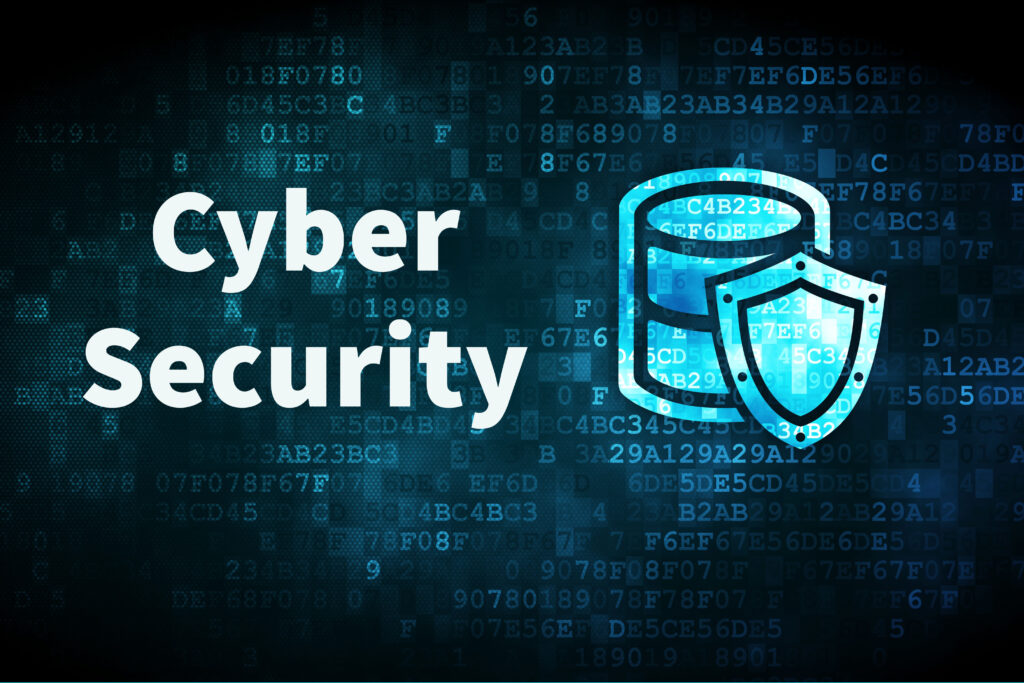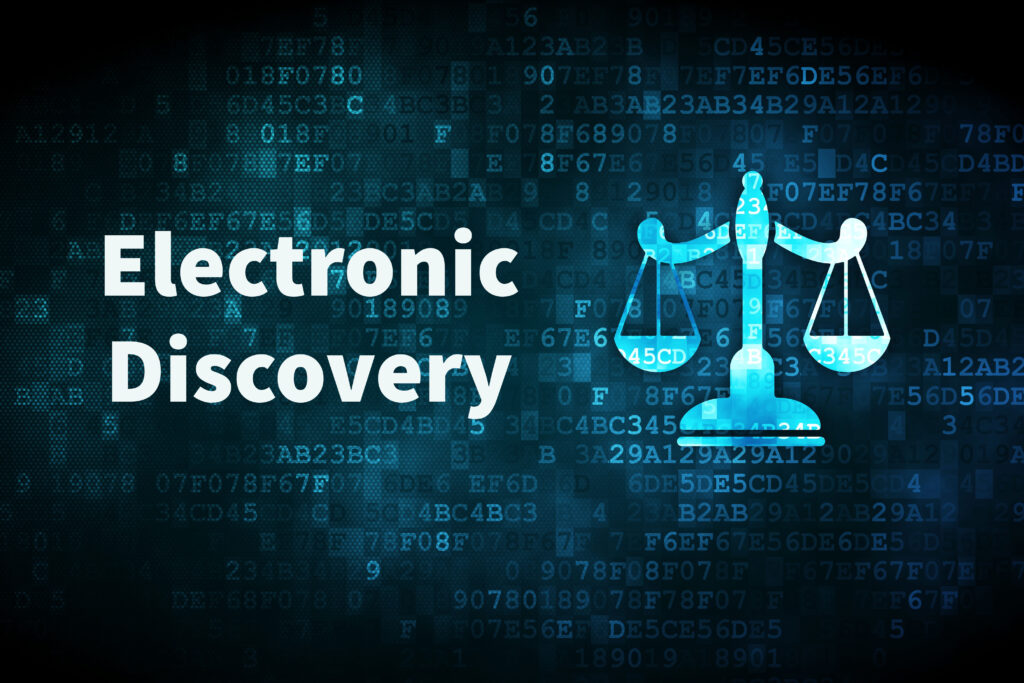
Above and beyond all the above, our company is proud to offer a wide range of other computer-related services to our clients. In addition to our top-notch computer forensic services, we also offer expert consulting services to businesses of all sizes. Our team of experienced consultants can help your business assess its current IT infrastructure and identify areas for improvement in terms of security, efficiency, and overall effectiveness.
Our team of computer experts has extensive experience and knowledge in working with a wide range of systems, data, and software across various industries. By working on numerous cases, our experts have been exposed to a vast array of technological environments and have developed an in-depth understanding of how different systems and data interrelate. This enables us to provide valuable insights and perspectives that can greatly benefit your legal and information technology teams’ knowledge and understanding of the technical issues at hand. Our experts are dedicated to staying up-to-date with the latest advancements in technology and regularly attend conferences and seminars to expand their knowledge base. With our team’s expertise and diverse experiences, we can bring a unique perspective and enhance your understanding of the technical aspects that are unique to your organization.
We also offer consulting services to help businesses manage large volumes of digital data in the context of legal proceedings. Our team has extensive experience in this area, and we can provide tailored solutions to meet the specific needs of your business. Additionally, we offer training and education services to help businesses and their employees stay up-to-date on the latest developments in the world of technology and to ensure that everyone is using best practices when it comes to cybersecurity and data management.
Here are examples of other services that we provide:
Trial Presentations
The use of computers in trial presentations has become increasingly common in recent years. Rather than relying on traditional methods of presenting evidence, such as poster boards or handouts, attorneys can use computer technology to create more dynamic and engaging presentations.
One of the most common uses of computers in trial presentations is to create multimedia exhibits that combine audio, video, and other digital media. Attorneys can use these exhibits to help jurors understand complex concepts or to illustrate key points in a case.
Computers can also be used to create interactive exhibits that allow jurors to explore evidence on their own. For example, attorneys can create virtual crime scenes or use 3D modeling software to recreate an accident or other event.
Another benefit of using computers in trial presentations is that it allows attorneys to present evidence in a more organized and efficient manner. Rather than fumbling with papers or trying to flip through a binder, attorneys can quickly access the evidence they need with just a few clicks.
Overall, the use of computers in trial presentations can help attorneys create more effective and persuasive presentations, making it easier to communicate key information to jurors and increase the chances of winning the case.
Computer Imaging
The process of imaging a computer is a critical step in computer forensics and electronic discovery. It involves creating a bit-by-bit copy of a computer’s hard drive or other storage media to preserve the data for analysis.
The imaging process typically begins with the identification of the target computer or storage device, which is then connected to a forensic computer or write-blocker device to prevent any changes to the original data. The forensic computer is then used to create a forensic image of the storage media by reading and copying every sector of the device, including unused and hidden sectors.
The imaging process may take several hours or even days to complete, depending on the size of the storage media and the speed of the forensic computer. During the imaging process, it is important to ensure that the original device is not altered in any way and that the imaging process is completed without any errors.
Once the imaging process is complete, the forensic image is verified to ensure that it is an exact copy of the original data. The image is then stored in a secure location and analyzed using specialized forensic software to search for evidence of any relevant data or activities.
The process of imaging a computer is a critical step in computer forensics and electronic discovery. By creating a bit-by-bit copy of a computer’s storage media, investigators can preserve the original data and analyze it for evidence, without altering the original device.
Digital Records Retention Policies
A digital records retention policy is a set of guidelines and procedures that organizations follow to manage electronic records and information. This policy is essential for businesses that want to ensure legal compliance, reduce costs, and minimize the risk of data breaches and litigation. Here are some of the key benefits of having a digital records retention policy:
- Legal compliance: A digital records retention policy helps organizations comply with legal and regulatory requirements for managing electronic records. By defining the retention periods for different types of records, organizations can ensure that they retain the records for the required period and dispose of them appropriately.
- Cost savings: A digital records retention policy can help organizations reduce the costs of storing and managing electronic records. By defining retention periods and disposing of records when they are no longer needed, organizations can free up storage space, reduce backup and recovery times, and minimize the costs of data retrieval.
- Risk management: A digital records retention policy can help organizations minimize the risks of data breaches and litigation. By defining procedures for managing and disposing of records, organizations can reduce the risk of unauthorized access to sensitive data and minimize the potential for legal disputes.
- Efficiency: A digital records retention policy can help organizations improve efficiency by defining clear guidelines for managing records. By standardizing the way that records are managed, organizations can streamline processes, reduce errors, and improve the accuracy of data.
- Preservation: A digital records retention policy can help organizations preserve important records and information for future use. By retaining records for the required period, organizations can ensure that they have access to critical data when needed, such as for audits, legal disputes, or other business purposes.
In summary, a digital records retention policy is essential for organizations that want to manage electronic records effectively, minimize risk, reduce costs, and ensure legal compliance. By implementing a digital records retention policy, organizations can improve efficiency, preserve critical information, and protect themselves from potential legal disputes and data breaches.
Digital Information Collaboration
Sharing digital information in legal cases has become increasingly important as electronic documents and data have become more prevalent. In many cases, electronic data is the primary source of evidence, and it is essential to share this information in a way that is secure, efficient, and compliant with legal requirements.
Here are some of the key considerations for sharing digital information in legal cases:
- Security: Digital information must be shared in a secure manner to protect against unauthorized access or data breaches. Encryption, password protection, and secure file sharing platforms can help ensure that information is only accessible to authorized parties.
- Chain of custody: It is important to maintain a clear chain of custody for digital information to ensure that it has not been tampered with or altered. This involves tracking who has accessed the information and when and ensuring that it has not been modified in any way.
- Compliance: Sharing digital information in legal cases must comply with legal and regulatory requirements, such as data privacy laws or eDiscovery rules. Failing to comply with these requirements can result in penalties or sanctions.
- Efficiency: Sharing digital information efficiently is critical to ensuring that legal proceedings are not delayed or disrupted. Electronic document review platforms, document management systems, and secure file sharing platforms can help streamline the process and save time and resources.
- Collaboration: Legal teams often need to collaborate on digital information, such as when reviewing documents or analyzing data. Collaboration tools, such as virtual data rooms or collaborative document review platforms, can help facilitate this process and enable more effective teamwork.
In summary, sharing digital information in legal cases requires careful consideration of security, chain of custody, compliance, efficiency, and collaboration. By implementing secure and efficient processes for sharing digital information, legal teams can ensure that they have access to critical evidence and information when needed, and that they are able to collaborate effectively to achieve their legal objectives.
Handling Digital Evidence
The handling of digital evidence is a critical aspect of computer forensics and electronic discovery. Digital evidence includes any data that is stored electronically, such as emails, text messages, social media posts, financial records, and other electronic documents.
The handling of digital evidence begins with the identification and preservation of the evidence. This involves identifying the relevant devices, such as computers, servers, smartphones, and other storage media, and ensuring that they are not altered or destroyed.
Next, the evidence is collected and processed to extract relevant data. This may involve creating forensic images of storage media, such as hard drives, and analyzing the images using specialized forensic software to search for relevant data.
Once the relevant data is identified, it must be analyzed and interpreted to determine its significance and relevance to the case. This may involve the use of advanced analytics and data visualization tools to identify patterns and relationships in the data.
Throughout the handling of digital evidence, it is critical to maintain a strict chain of custody to ensure the integrity and admissibility of the evidence in court. This involves documenting every step in the process, from the identification and preservation of the evidence to its analysis and interpretation and ensuring that the evidence is stored in a secure and controlled environment.
The handling of digital evidence is a complex and multifaceted process that requires specialized knowledge and expertise. By following best practices for the identification, preservation, collection, processing, analysis, and interpretation of digital evidence, investigators can ensure that the evidence is admissible in court and contributes to a successful outcome in the case.
The handling of digital evidence is a critical aspect of computer forensics and electronic discovery. Digital evidence includes any data that is stored electronically, such as emails, text messages, social media posts, financial records, and other electronic documents.
The handling of digital evidence begins with the identification and preservation of the evidence. This involves identifying the relevant devices, such as computers, servers, smartphones, and other storage media, and ensuring that they are not altered or destroyed.
Next, the evidence is collected and processed to extract relevant data. This may involve creating forensic images of storage media, such as hard drives, and analyzing the images using specialized forensic software to search for relevant data.
Once the relevant data is identified, it must be analyzed and interpreted to determine its significance and relevance to the case. This may involve the use of advanced analytics and data visualization tools to identify patterns and relationships in the data.
Throughout the handling of digital evidence, it is critical to maintain a strict chain of custody to ensure the integrity and admissibility of the evidence in court. This involves documenting every step in the process, from the identification and preservation of the evidence to its analysis and interpretation and ensuring that the evidence is stored in a secure and controlled environment.
Overall, the handling of digital evidence is a complex and multifaceted process that requires specialized knowledge and expertise. By following best practices for the identification, preservation, collection, processing, analysis, and interpretation of digital evidence, investigators can ensure that the evidence is admissible in court and contributes to a successful outcome in the case.
Spoliation
Computer spoliation, also known as electronic spoliation, refers to the intentional or unintentional destruction, alteration, or loss of electronic data or evidence. Spoliation of electronic data can occur through a variety of methods, including the deletion of files, the modification of data, the overwriting of files, or the destruction of hardware.
In the context of legal cases, computer spoliation can have serious consequences. When electronic data is altered or destroyed, it can compromise the integrity of the evidence and make it difficult or impossible to establish the facts of a case. Additionally, intentional spoliation of electronic data can be seen as an attempt to obstruct justice and can result in legal sanctions or even criminal charges.
To prevent computer spoliation, it’s important to have proper procedures in place for the preservation and collection of electronic data. This may include the use of forensic imaging to make a copy of a computer’s hard drive, the preservation of email records and other electronic communications, and the secure storage of all electronic evidence.
If spoliation is suspected, it’s important to act quickly to preserve any remaining evidence and take steps to prevent further spoliation. This may involve obtaining a court order to prevent the destruction of electronic data or working with a computer forensic expert to recover deleted or altered files.
In conclusion, computer spoliation can have serious consequences in legal cases, and it’s important for individuals and organizations to take steps to prevent it from occurring. By implementing proper procedures for the preservation and collection of electronic data, and responding quickly to suspected spoliation, it’s possible to maintain the integrity of electronic evidence and ensure a fair outcome in legal proceedings.
Detecting Spoilation
Detecting computer spoliation can be challenging, as it often involves the deliberate alteration or destruction of electronic data or evidence. However, there are several methods that can be used to identify spoliation and help preserve the integrity of electronic evidence.
One common method for detecting computer spoliation is to examine the metadata associated with electronic files. Metadata includes information such as the date and time a file was created, modified, or accessed, as well as information about the user who created or modified the file. By analyzing metadata, computer forensic experts can often identify anomalies or inconsistencies that may suggest spoliation.
Another method for detecting spoliation is to use forensic tools to recover deleted or modified files. Even when a file has been deleted or modified, remnants of the file may still exist on a computer’s hard drive. By using specialized software and techniques, forensic experts can often recover deleted or modified files and determine if any spoliation has occurred.
In some cases, the best way to detect spoliation is through witness testimony or other evidence of intentional destruction or alteration of electronic data. This may involve interviewing individuals who had access to the data or reviewing email or other communications that suggest spoliation may have occurred.
Overall, detecting computer spoliation requires a combination of forensic tools and techniques, as well as an understanding of the underlying technology and data structures involved. By working with experienced computer forensic experts and implementing proper procedures for the preservation and collection of electronic data, it’s possible to detect and prevent spoliation and maintain the integrity of electronic evidence in legal cases.
Preventing Spoliation
Preventing computer spoliation involves implementing proactive measures to protect electronic data and evidence from intentional or unintentional alteration or destruction. Here are some effective strategies for preventing computer spoliation:
- Establish and enforce a spoliation policy: Develop and implement a spoliation policy that outlines procedures for preserving electronic data and evidence in legal matters. The policy should define spoliation, specify the types of data and evidence that must be preserved, and establish guidelines for the handling and retention of electronic data and evidence.
- Train employees in spoliation prevention: Provide training and education for employees on the importance of preserving electronic data and evidence and ensure that all employees understand the spoliation policy and their role in implementing it.
- Implement data retention policies: Establish policies for retaining electronic data and evidence, including guidelines for backup, and archiving of critical data, and ensure that all employees understand the importance of following these policies.
- Secure access to data: Restrict access to electronic data and evidence to authorized personnel only and implement measures such as password protection and encryption to prevent unauthorized access and tampering.
- Use forensic tools to protect and preserve data: Employ computer forensic tools and techniques to protect and preserve electronic data and evidence, including imaging and copying hard drives, analyzing metadata, and recovering deleted files.
- Work with computer forensic experts: Partner with experienced computer forensic experts to ensure that all electronic data and evidence is properly preserved and protected in legal matters.
By implementing these strategies, organizations can take proactive steps to prevent computer spoliation and maintain the integrity of electronic data and evidence in legal matters.



